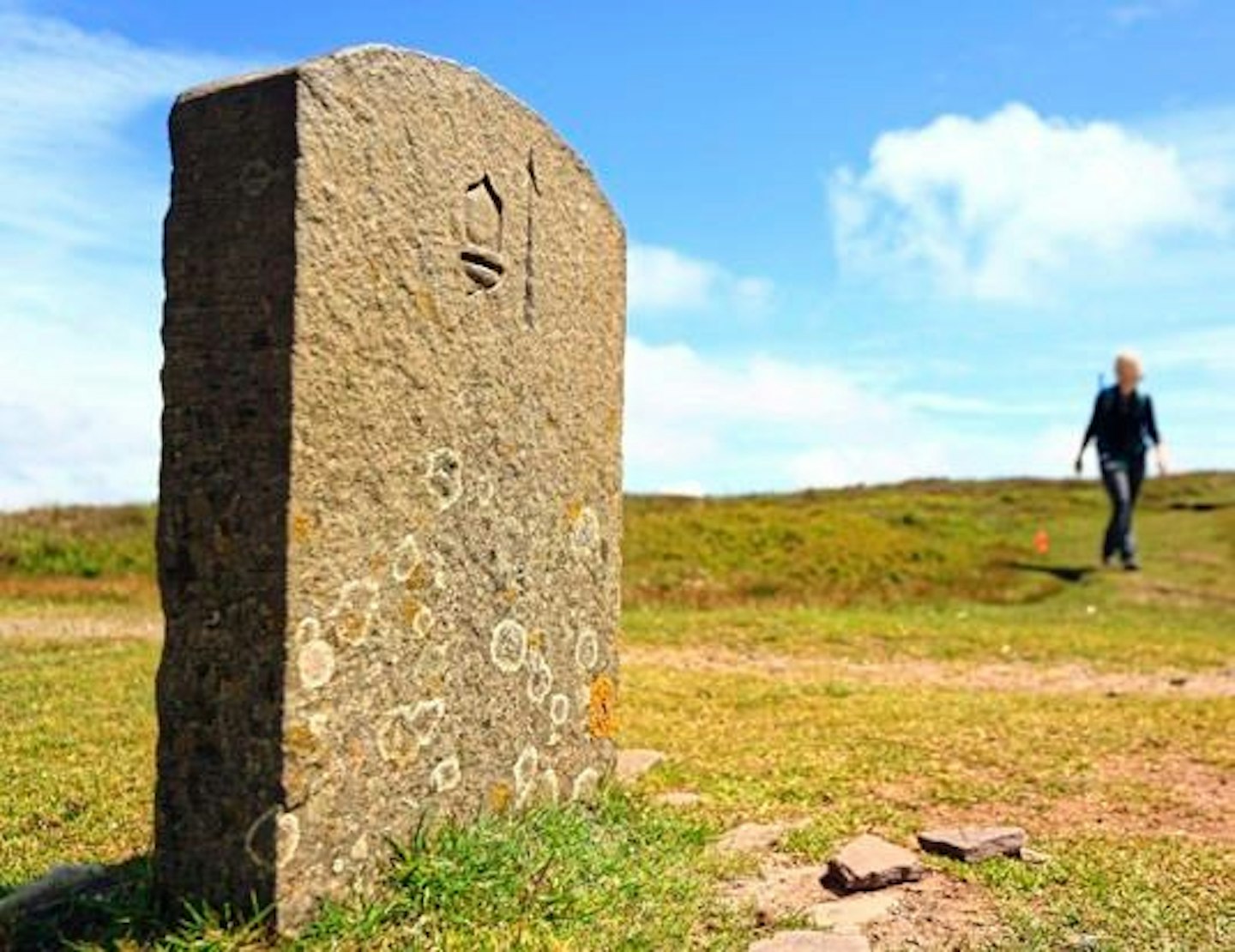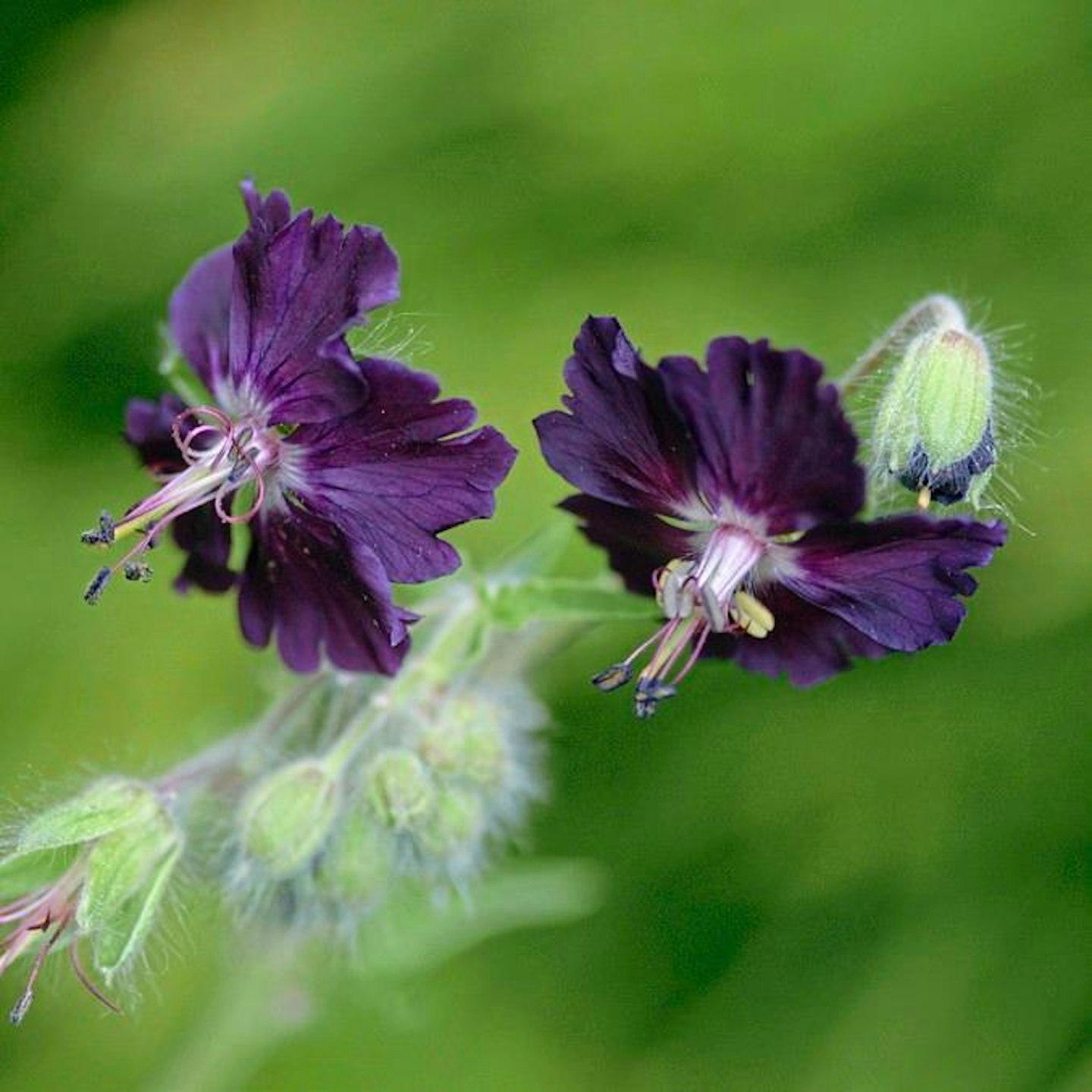Join us in the bewitching Black Mountains on a journey to the heart of darkness in the borderlands of south-east Wales.
WORDS: JENNY WALTERS PHOTOS: TOM BAILEY

IN THE BEGINNING all was black. Perhaps a deity created light, perhaps it followed a Big Bang, but 13.8 billion years since that explosion, black still dominates the uplands of Britain. Black Hill is the commonest name for a summit in Britain, with 48 across the country. There are also Black Mountains, Black Mounts, Black Crags, Black Fells and hundreds of peaks bearing the Scottish Gaelic dubh or dhubh and the Welsh du or ddu. Here in Herefordshire I’m walking up a Black Hill to a Black Mountain and returning by a place called Black Darren, all in an area known as the Black Mountains.
The southern approach to this Black Hill is fondly called the Cat’s Back – a thin, knobbly ridge which arches up from the Olchon Valley like the spine of a furious feline. It is a Goldilocks route for walkers: narrow enough to push tumbling views close to your boots, but not so narrow it’s scary; steep enough to step you fast into the sky, but not so steep you need to scramble.

If this were the back of a black cat it would be considered lucky. Or unlucky. It all depends where, and when, in the world you might be. The ancient Egyptians worshipped the goddess Bastet in the form of a black cat. In Welsh lore, one arriving at your home brings good health, in Scotland prosperity, and across Britain one crossing your path is thought fortunate, as long as it’s passing left to right. To others, the shadowy felines were evil incarnate. Many thought they were witches’ familiars. Pope Gregory IX wrote in the 13th century that devil worshippers ritually kissed the hindquarters of a black cat.
This cat’s back fattens as it approaches the triangulation point at the 2100-foot summit of Black Hill. Also known as Criby Garth, it is the easternmost top of the Black Mountains, a range of long ridgelines spanning deep into Wales’ Bannau Brycheiniog National Park. Many have likened the massif’s contours to a giant hand, including writer Raymond Williams in People of the Black Mountains. I’m standing on the thumb, the Hatterrall Ridge to my west is the index finger, the middle digit is knuckled by Bâl Mawr, the ring finger by Pen Twyn Mawr, and the little finger stretches to a nail at Table Mountain above Crickhowell.

In Williams’ books, a young man called Glyn is searching for his grandfather, lost up here on the high ridges of YMynyddoedd Duon. His story is interwoven with episodes imagined from the area’s history, ranging from cave-dwelling horse-hunters in 23,000BC to the Glyndŵr rebellion and Great Comet of the 15th century (and would have reached the 20th century but the trilogy was never completed). Like all borderlands these Welsh Marches have a tumultuous history, and following Glyn’s footsteps north-west from Black Hill I reach the Offa’s Dyke Path.
Back in 785AD England was a welter of warring kingdoms: Wessex, Essex, Kent, Sussex, East Anglia, Northumbria and Mercia. Ruled by a king called Offa, Mercia stretched from the Trent to the Thames, the Fens to the Welsh border and it was here that Offa decided to build a vast linear earthwork – a ‘great dyke… from sea to sea’ – to keep the Welsh out.

Twelve centuries later it provided the inspiration for a 177-mile national trail and I turn to follow it, and the current Anglo-Welsh border, south along the Hatterrall Ridge. These are the highest miles of the Offa’s Dyke Path and at 2306ft (703m) I hit the summit of the trail – and Herefordshire’s County Top – at the Black Mountain. Confusingly, the spot is only marked with a height on OS maps, and no name. It’s also hard to pinpoint on the ground, as the gradients are so subtle. In contrast to the Cat’s Back, this ridge is a shelf so broad it blocks views into the valleys to either side. Instead, your eye is drawn out to distant corrugations on the far horizons, and up to the blue sky above.
On a sunny day like this, it’s a puzzle why black is such a theme here. Williams wrote of the rich palette of these mountains: ‘From a distance, in good light, the long whaleback ridges are blue. Under cloud they are grey cloudbanks. But from within they are many colours: olive green under sunlight; darker green with the patches of summer bracken; green with a pink tinge when there are young leaves on the whinberries; dark with the heather out of flower, purple briefly in late summer; russet with autumn bracken, when at dawn after rain the eastern slopes can be red; pale gold in dead winter bracken, against the white of snow. Yet black, a cellular black, under storm cloud: a pitted honeycomb of darkness within darkness.’

In 2014, the creation of the ‘world’s darkest material’ was announced by a company called Surrey NanoSystems. Technically black isn’t a colour, but instead the absence or absorption of the visible spectrum. Vantablack, as the coating made from a Vertically Aligned Nano Tube Array was called, absorbs 99.965% of light. It is so black it destroys all perception of texture or contour.
Paint it on a 3D object and that object looks flat, or like a black hole. Run a laser pointer across it and the red dot vanishes.

